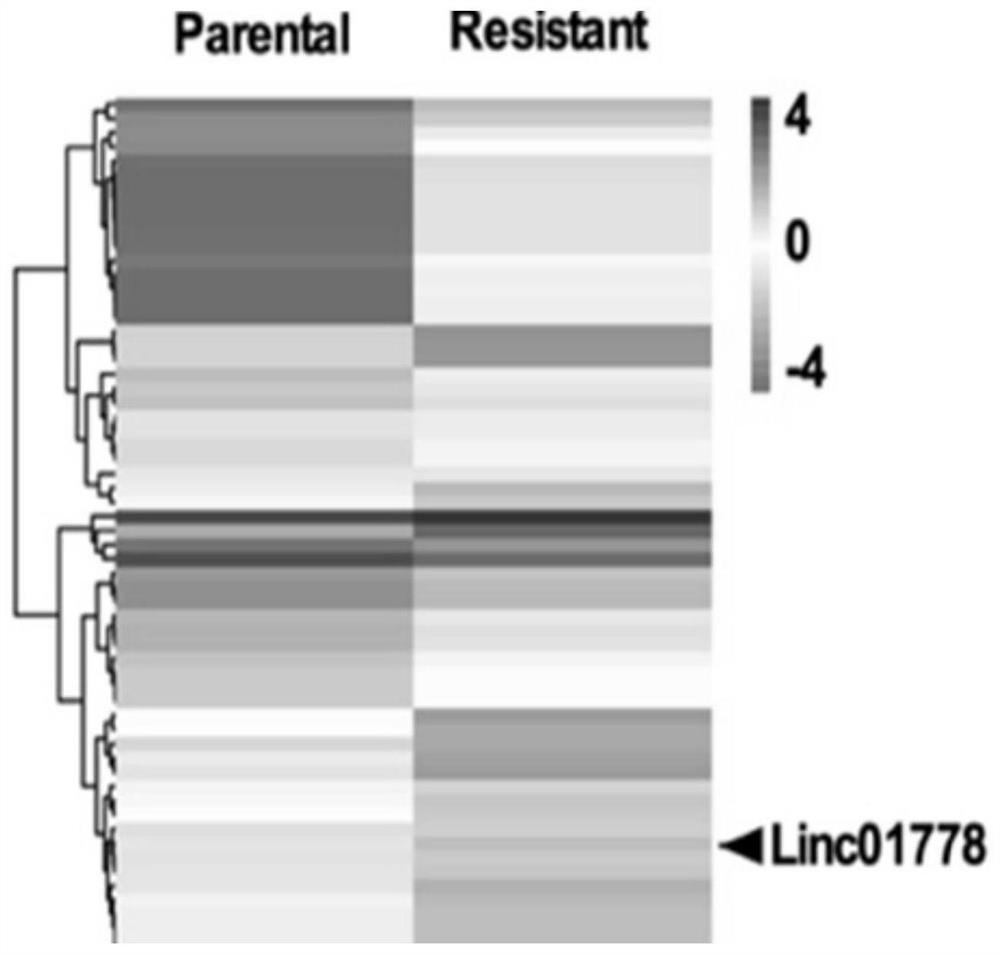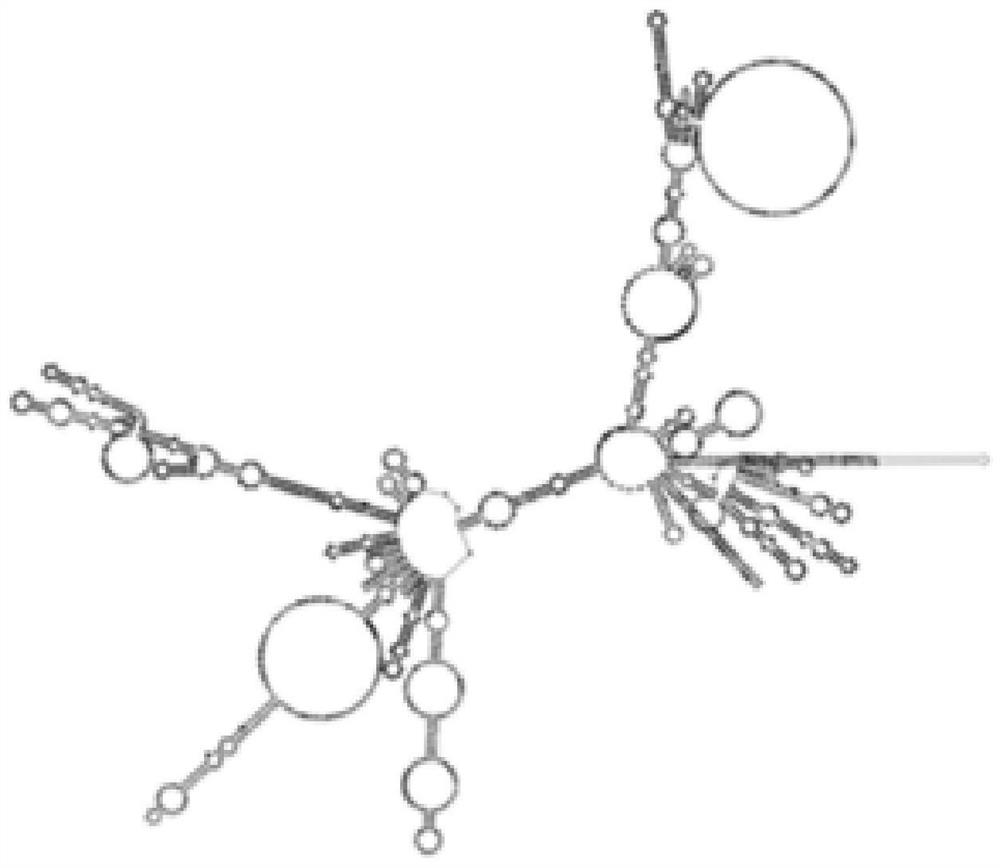Application of long-chain non-coding RNA and inhibitor thereof in prevention and treatment of breast cancer
A long-chain non-coding, breast cancer technology, applied in the field of tumor molecular biology, can solve the problems of patients not receiving effective treatment, tumor cells resurgence, low treatment effect, etc., and achieve synergistic treatment effect and targeted Effects of treatment, improved survival and survival
- Summary
- Abstract
- Description
- Claims
- Application Information
AI Technical Summary
Problems solved by technology
Method used
Image
Examples
Embodiment 1
[0037] Acquisition and analysis of long non-coding RNA LINC01778 V2
[0038] 1. Screening of long non-coding RNA LINC01778 V2
[0039] Use cisplatin drug for induction to establish a triple-negative breast cancer stable cell line resistant to cisplatin drug. In this example, the concentration gradient method is used to start from a low concentration. After two years, completely resistant to cisplatin is established. Stable drug-resistant cell lines of triple-negative breast cancer. Then, through lncRNA chip detection, compare cisplatin-resistant triple-negative breast cancer cell lines and cisplatin-sensitive triple-negative breast cancer cell lines, and screen out a batch of differentially expressed lncRNAs; Cisplatin is not resistant to drugs; specifically, BGI sequencing is used to accurately screen lncRNA high-throughput sequencing based on Illumina's fourth-generation high-throughput sequencing platform. lncRNA high-throughput sequencing includes lncRNA identification, l...
Embodiment 2
[0061] Based on the MDA-MB-231 cell line, the activity changes of cisplatin-resistant / cisplatin-sensitive triple-negative breast cancer cells under the action of cisplatin were detected, and the cisplatin-resistant / cisplatin-sensitive triple negative breast cancer cells were detected by fluorescence quantitative PCR (qPCR). Expression of LINC01778 V2 in Negative Breast Cancer Cells
[0062] 1. Detection of activity changes of cisplatin-resistant / cisplatin-sensitive triple-negative breast cancer cells under the action of cisplatin
[0063] The cisplatin-resistant triple-negative breast cancer cell line was MDA-MB-231CisR, and the cisplatin-sensitive triple-negative breast cancer cell line was MDA-MB-231parental. The same dose of cisplatin was administered at the same time, and MDA was observed within 2 days. -Cell activity changes of MB-231CisR and MDA-MB-231parental, results as Figure 5 As shown in (left), the activity of MDA-MB-231CisR cells generally remained elevated with...
Embodiment 3
[0076] Based on the MDA-MB-468 cell line, the activity changes of cisplatin-resistant / cisplatin-sensitive triple-negative breast cancer cells under the action of cisplatin were detected, and the cisplatin-resistant / cisplatin-sensitive triple negative breast cancer cells were detected by fluorescence quantitative PCR (qPCR). Expression of LINC01778 V2 in Negative Breast Cancer Cells
[0077] 1. Detection of activity changes of cisplatin-resistant / cisplatin-sensitive triple-negative breast cancer cells under the action of cisplatin
[0078] The cisplatin-resistant triple-negative breast cancer cell line was MDA-MB-468CisR, and the cisplatin-sensitive triple-negative breast cancer cell line was MDA-MB-468parental. The same dose of cisplatin was administered at the same time, and MDA was observed within 2 days. -Cell activity changes of MB-468CisR and MDA-MB-468parental, results as Image 6 As shown in (left), the activity of MDA-MB-468CisR cells generally remained elevated withi...
PUM
 Login to View More
Login to View More Abstract
Description
Claims
Application Information
 Login to View More
Login to View More - R&D
- Intellectual Property
- Life Sciences
- Materials
- Tech Scout
- Unparalleled Data Quality
- Higher Quality Content
- 60% Fewer Hallucinations
Browse by: Latest US Patents, China's latest patents, Technical Efficacy Thesaurus, Application Domain, Technology Topic, Popular Technical Reports.
© 2025 PatSnap. All rights reserved.Legal|Privacy policy|Modern Slavery Act Transparency Statement|Sitemap|About US| Contact US: help@patsnap.com



